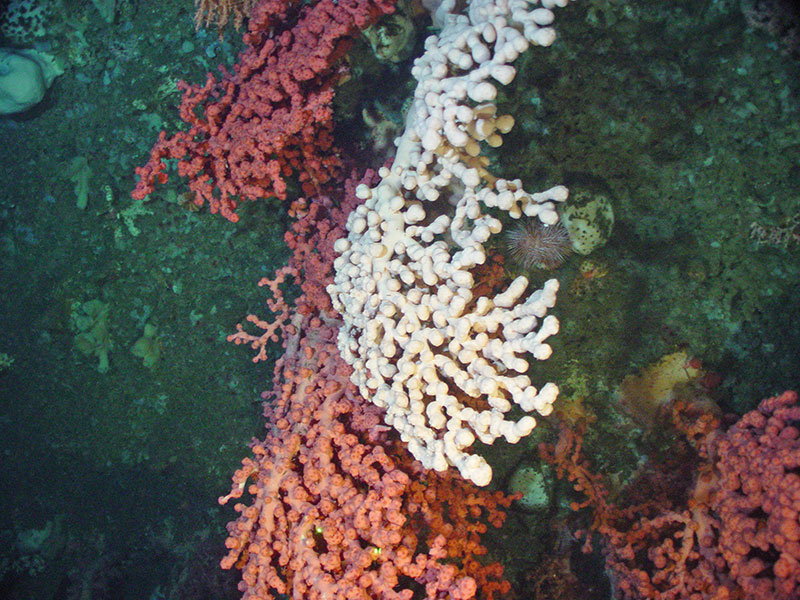
by Marty King and Ellen Kenchington, Fisheries and Oceans Canada, Bedford Institute of Oceanography, Dartmouth, Nova Scotia, Canada
August 29, 2019
Over the last two decades, Canada has made significant progress in mapping, studying, and protecting cold-water corals in its waters. In 2002, the Northeast Channel Coral Conservation Area was established under the Fisheries Act in an effort to protect a dense concentration of large gorgonian corals from bottom contact fishing . This fisheries closure was the first of its kind in Canada and continues to offer effective protection to what is known as the densest concentration of large gorgonian coral in the waters of the Scotian Shelf.

Map showing the Northeast Channel Coral Conservation Area. Image courtesy of Fisheries and Oceans Canada. Download image (jpg, 1.4 MB).
This and other coral and sponge conservation areas, along with marine protected areas (MPAs) created under the Oceans Act, such as the Gully MPA , will help Canada meet its commitment under the Convention on Biological Diversity (CBD) Aichi Target 11. Biodiversity goals and targets for Canada include conservation of at least 17 percent of terrestrial areas and inland water and 10 percent of coastal and marine areas through networks of protected areas and other effective area-based conservation measures by 2020. Dive locations during the Deep Connections 2019 expedition are immediately to the east of the southeast corner of the conservation area. This area has not been surveyed but has the potential to support additional dense coral concentrations.
Cold-water corals and sponges can be found throughout the waters off eastern Canada, in a range of depths, substrate types, and currents. Whether in a group or as an individuals, these animals may provide structural habitat for other marine creatures by providing a place to rest, feed, spawn, and avoid predators. In deep, dark waters, coral and sponge communities may present the only habitat-forming features on the seafloor. Corals and sponges are sessile and generally long-lived and slow growing, making them particularly vulnerable to human activities both directly (e.g., bottom contact fishing gear, subsea pipeline installation) and indirectly (e.g., climate change, ocean acidification).

The bubblegum coral Paragorgia arborea growing on a boulder in the Northeast Channel. Image courtesy of Fisheries and Oceans Canada. Download image (jpg, 2.9 MB).
The advent of cutting-edge technologies such as remotely operated and autonomous underwater vehicles has allowed the exploration of coral and sponge communities previously out of reach. Although recent research has significantly contributed to our understanding and appreciation of corals and sponges, there is still a great deal to learn about the distribution, diversity, reproduction, and resilience of these animals.
Coral and sponge communities play a vital ecological role in maintaining diverse and healthy aquatic ecosystems, contributing to species richness and biodiversity. Given our limited knowledge of coral and sponge biology and potential for harmful human-induced impacts, it follows that a heightened level of conservation and protection is required.